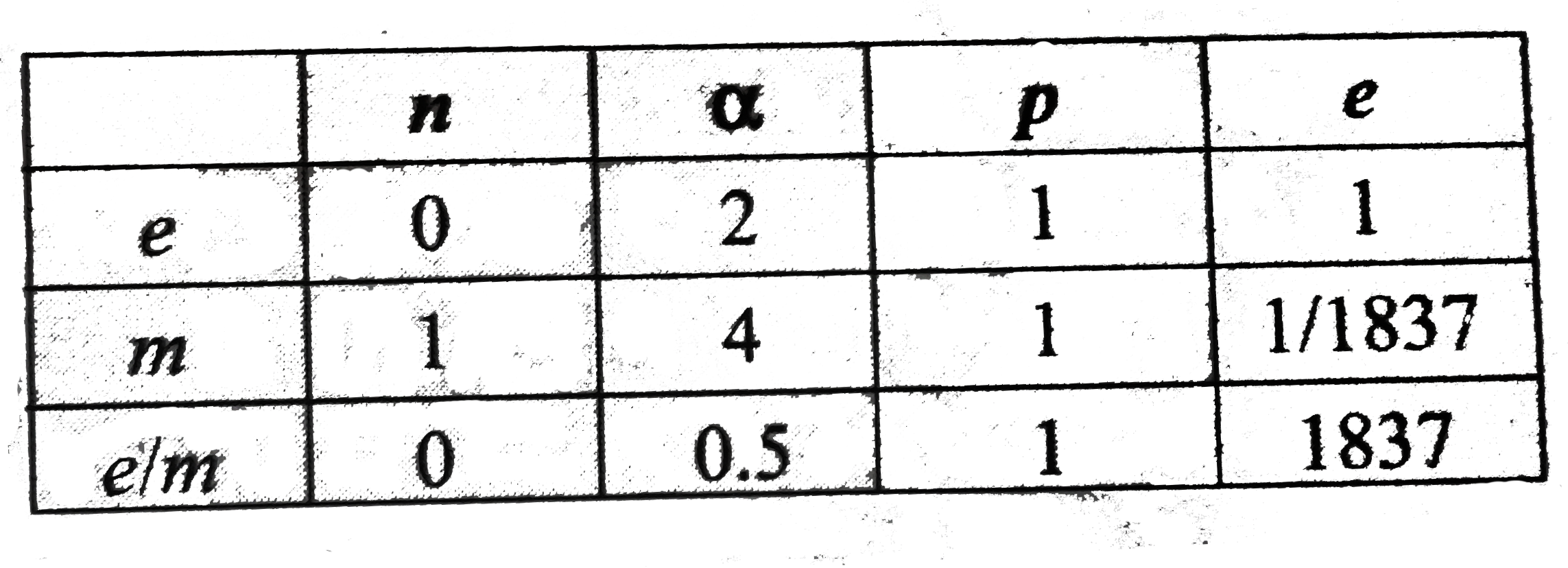The increasing order (lowest first) for the values of e/m (charge/mass) for electron (e), proton (p), neutron (n), and alpha particle (α) is
e,p,n, alpha
p,n,e, alpha
n,p, alpha,e
n, alpha,p,e
The correct Answer is:D
Topper's Solved these Questions
- ATOMIC STRUCTUREBOOK - CENGAGE CHEMISTRY ENGLISHCHAPTER - ATOMIC STRUCTUREEXERCISE - Archives Integer
2 Videos
- ATOMIC STRUCTUREBOOK - CENGAGE CHEMISTRY ENGLISHCHAPTER - ATOMIC STRUCTUREEXERCISE - Archives Fill In The Balnks
8 Videos
- ATOMIC STRUCTUREBOOK - CENGAGE CHEMISTRY ENGLISHCHAPTER - ATOMIC STRUCTUREEXERCISE - Archives Multiple Correct
7 Videos
- APPENDIX - INORGANIC VOLUME 1BOOK - CENGAGE CHEMISTRY ENGLISHCHAPTER - APPENDIX - INORGANIC VOLUME 1EXERCISE - chapter-7 Single correct answer
1 Videos
- CHEMICAL BONDING AND MOLECULAR STRUCTUREBOOK - CENGAGE CHEMISTRY ENGLISHCHAPTER - CHEMICAL BONDING AND MOLECULAR STRUCTUREEXERCISE - Archives Subjective
15 Videos
Similar Questions
Knowledge Check
The ratio of specific charge of a proton and an α-particle is
A2:1B1:2C1:4D1:1
The ratio of specific charge of a proton and an alpha-particle is :
View SolutionThe ratio of the e/m (specific charge) values of an electron and an α−particle is
View SolutionThe ration of spectific charge ( e//m) of a proton to that of an alpha-particle is :
View SolutionFor which subatomic particle the ratio of charge and mass would be greater. (A) Proton, (B) Alpha particle, (C) Neutron, (D) Electron
View SolutionThe charge to mass ratio of α− particles is approximately to the charge to mass ratio of protons:
View SolutionThe increasing order of wavelength for He+ ion, neutron (n) and electron (e−) particles, moving with the same velocity is
View SolutionWhich of the following particles can't be accelerated in a cyclotron?
(1) Proton p+ (2) Antiproton p−
(3) Alpha particle α++ (4) Positron e+
View Solution

